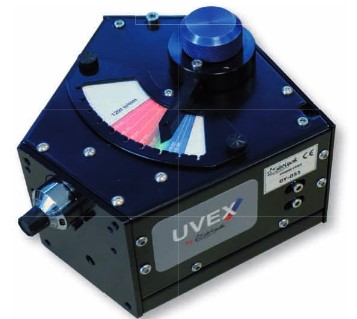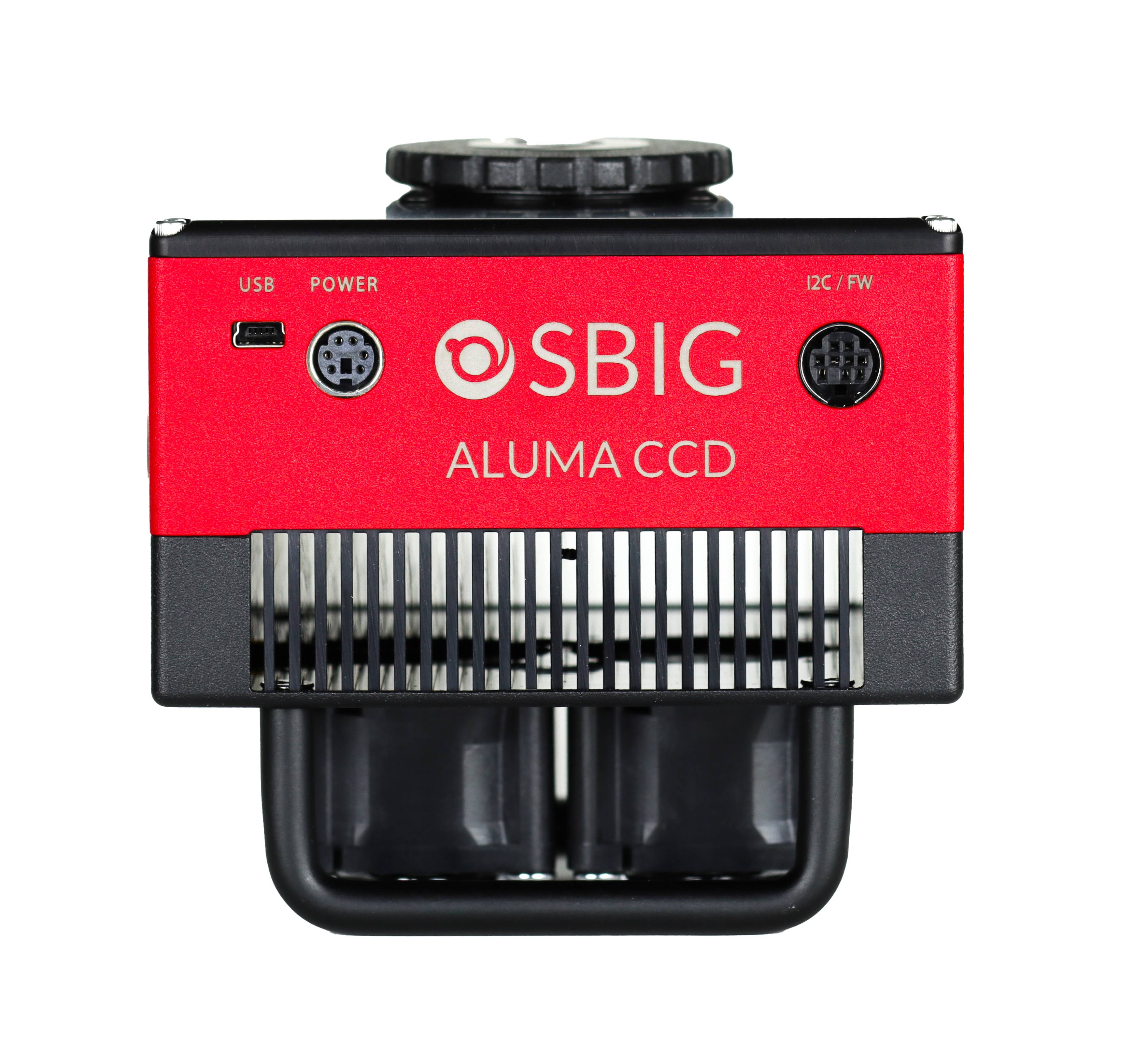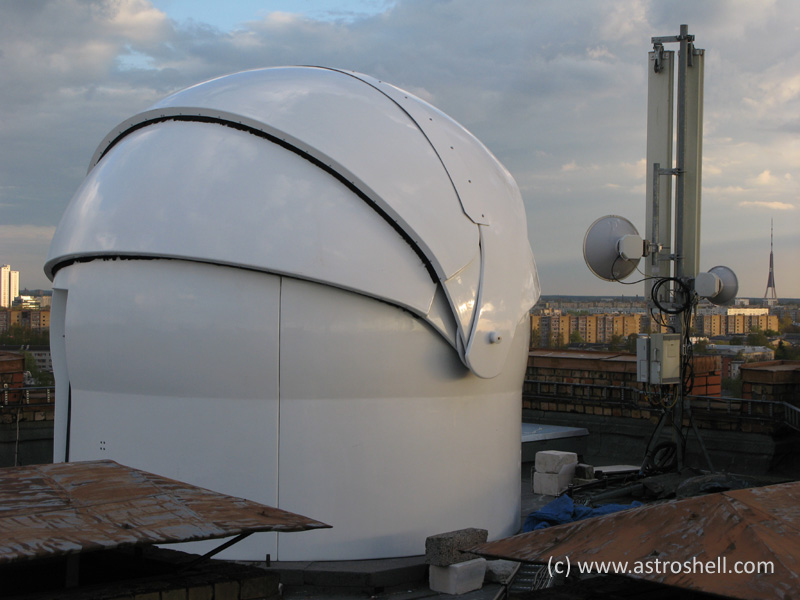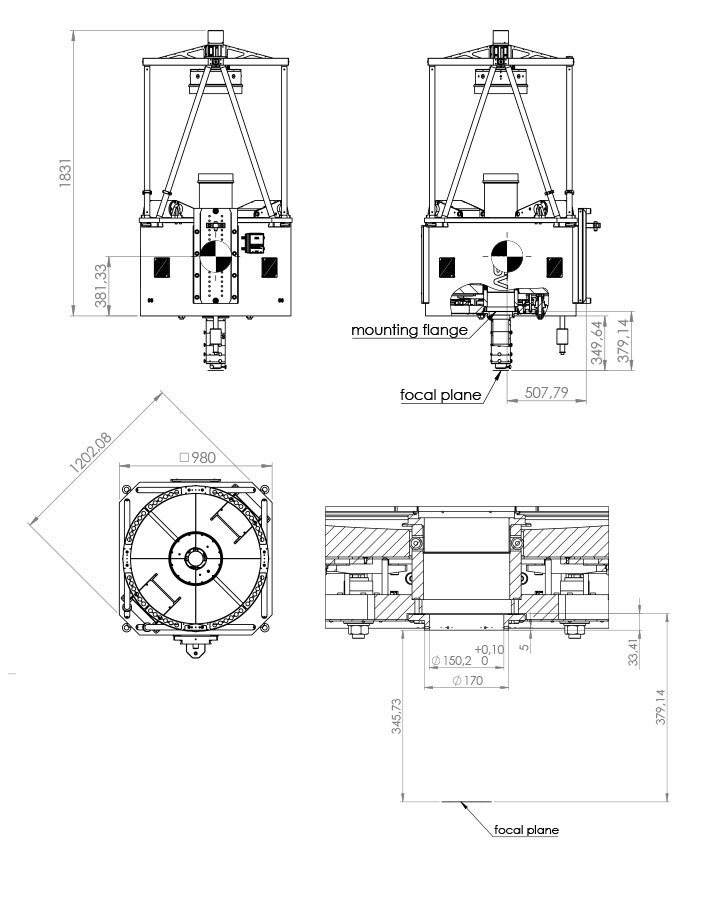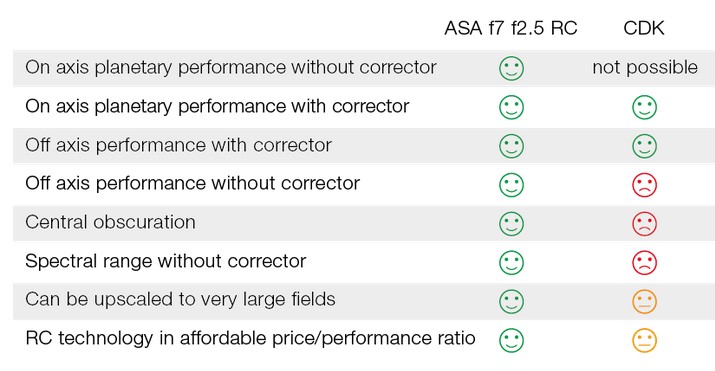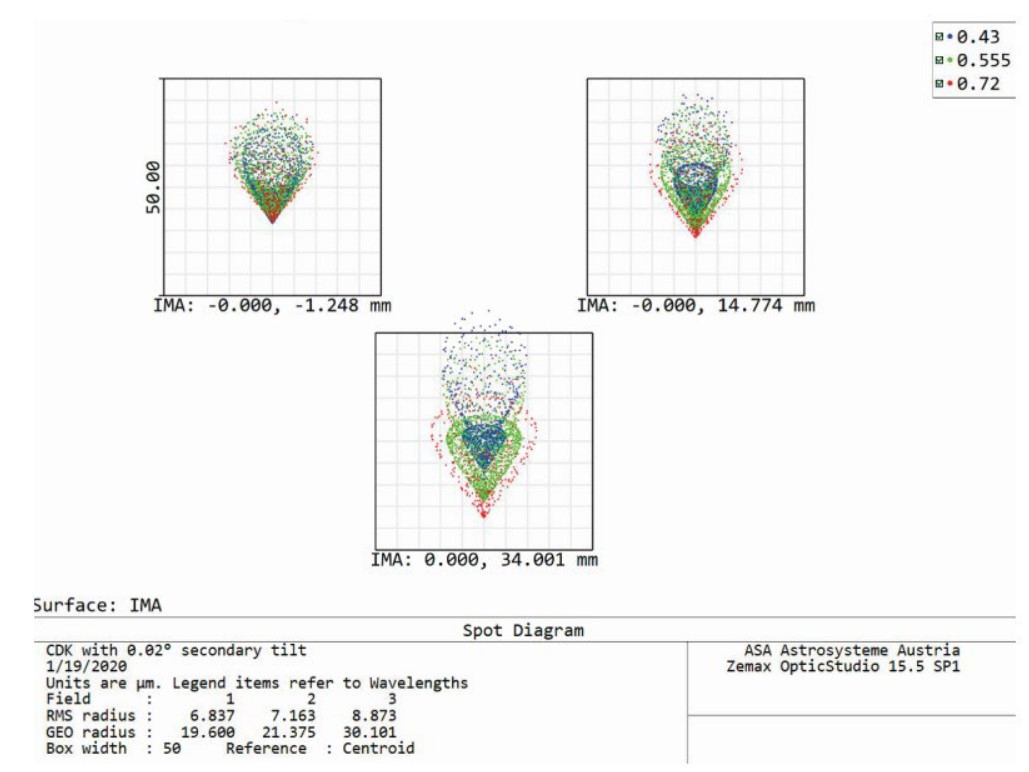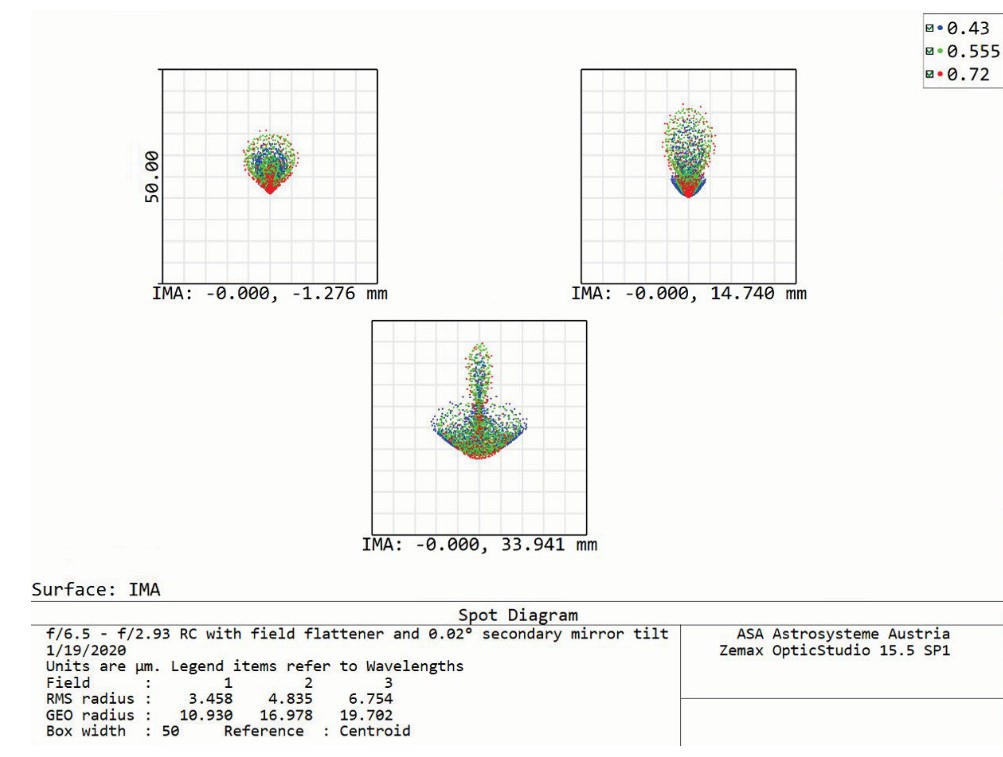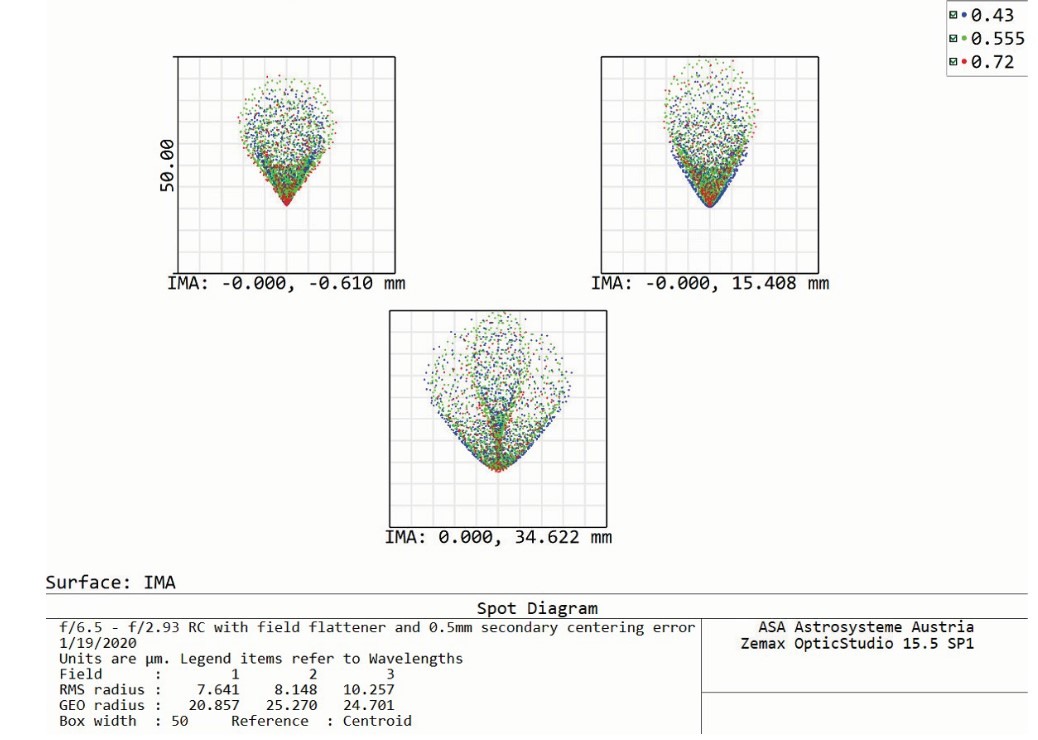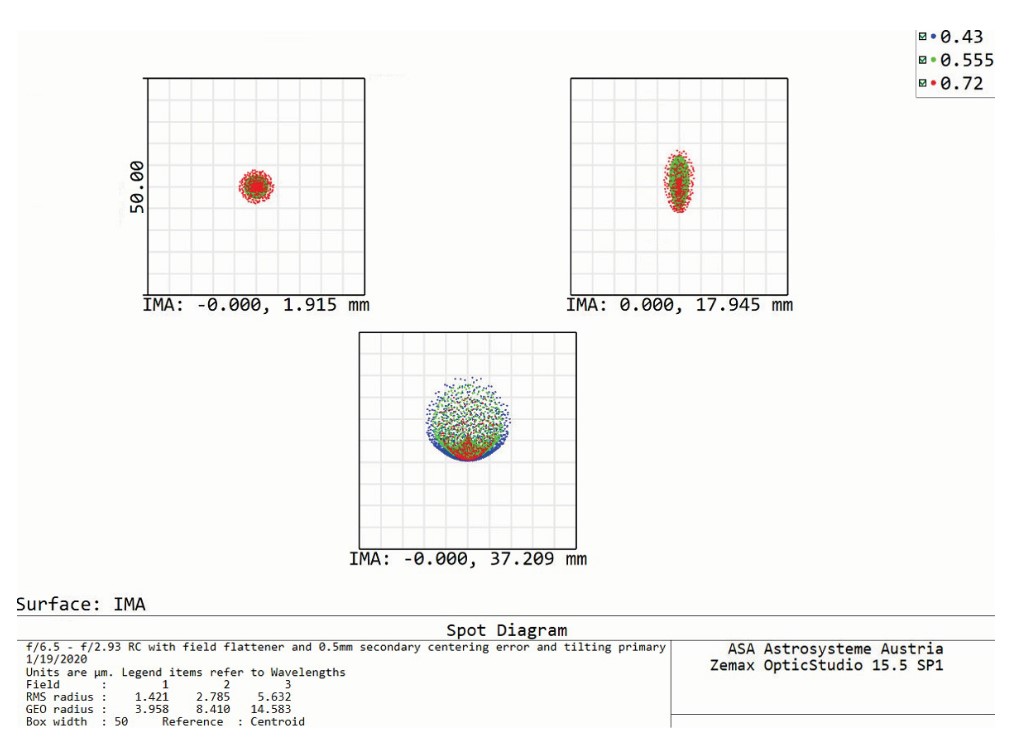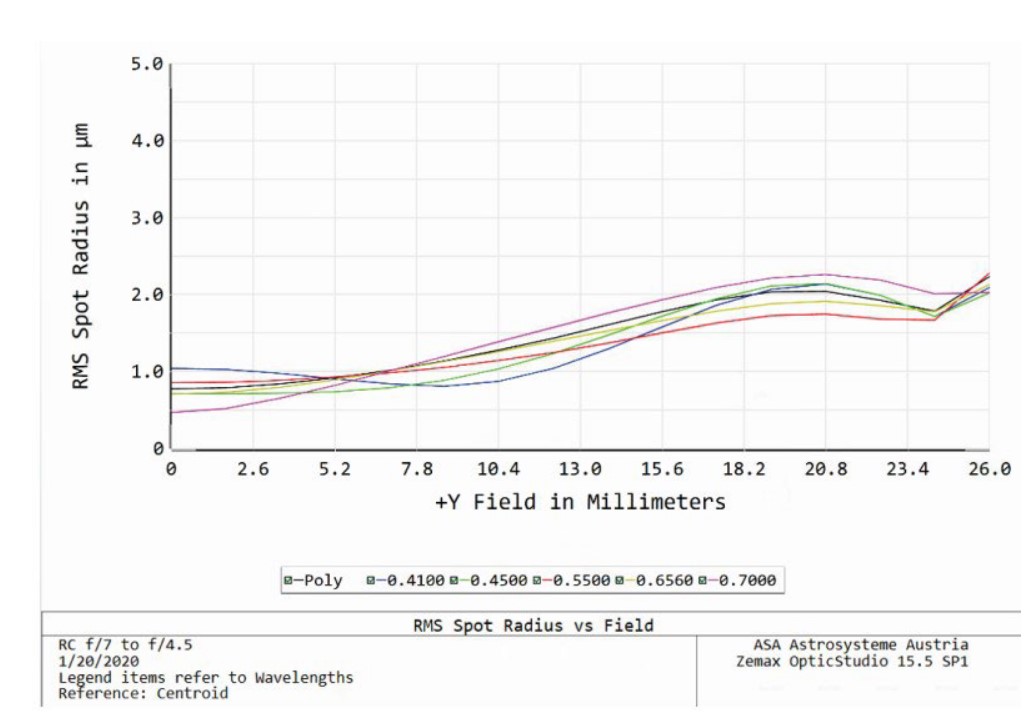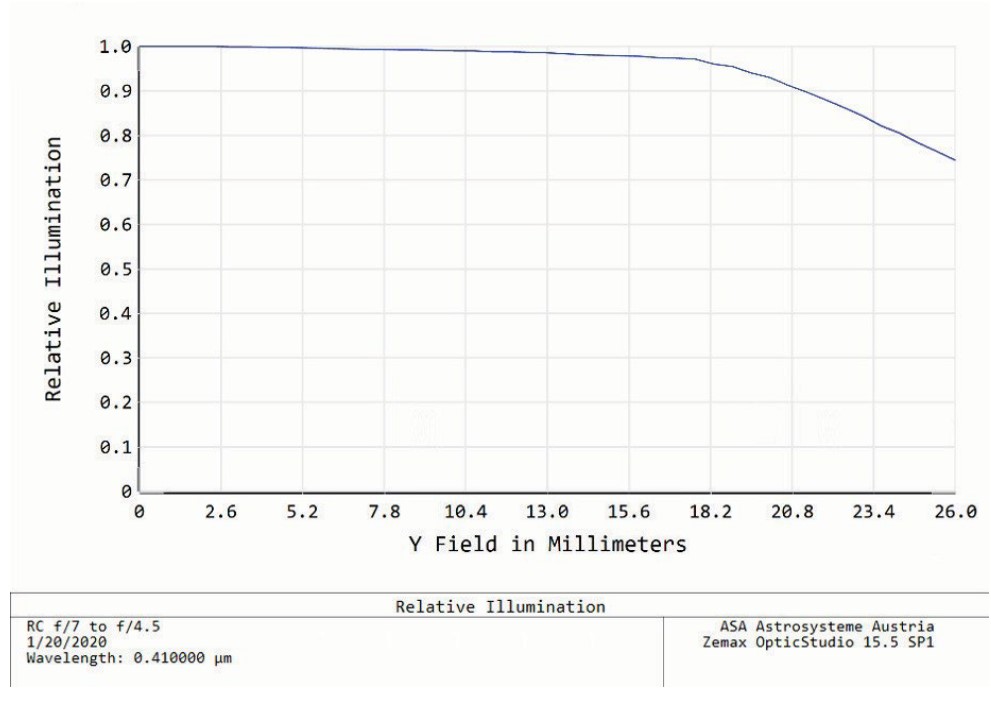
ASA at its best!
The RC800_5 package includes the RC800 OTA and our DDM500 mount with 1100 lb. capacity! The result is our highest performance available in a package deal.
The evolution milestone of telescopes.
The ASA800 0.8m is the largest aperture OTA offered from ASA without mount. Perfect fit for the ASA direct drive mounts with absolute encoders. As all ASA telescopes the ASA800 is equipped with quartz glass optics from ASA Our optics guarantee diffraction limited performance and best micro roughness numbers even under the most perfect earthbound astronomical seeing conditions while maintaining a fast f-ratio primary mirror design leading to less obstruction, higher contrast and a more compact system.
f6.85/f2.5 full carbon Richey-Chrétien design with absolute encoder secondary mirror focusing unit.
THE DDM500, THE LARGEST STANDARD MOUNT WITH ASA Direct Drive Technology AND ABSOLUTE ENCODERS AVAILABLE WORLDWIDE.
Over 15 years of experience went into the design of the DDM500. Ready to carry large aperture telescopes with the highest level of pointing and tracking accuracy. Load capacity is 500kg/1100lbs on a custom-built pier. The ASA DDM500 is the perfect workhorse for all areas of research ranging from astronomical observations to laser communication and satellite tracking
Technical Details
 Electronic
ElectronicOnly the best for your telescope!
We believe that the most important part in producing optics is the testing. So ASA decided that we invest in the best test equipment available, remove any measuring error as good as possible and use real values in our specifications.
RC & CDK Comparison
Advantages of the Ritchey–Chrétien Telescope Design
vs CDK (The Complete Story!)
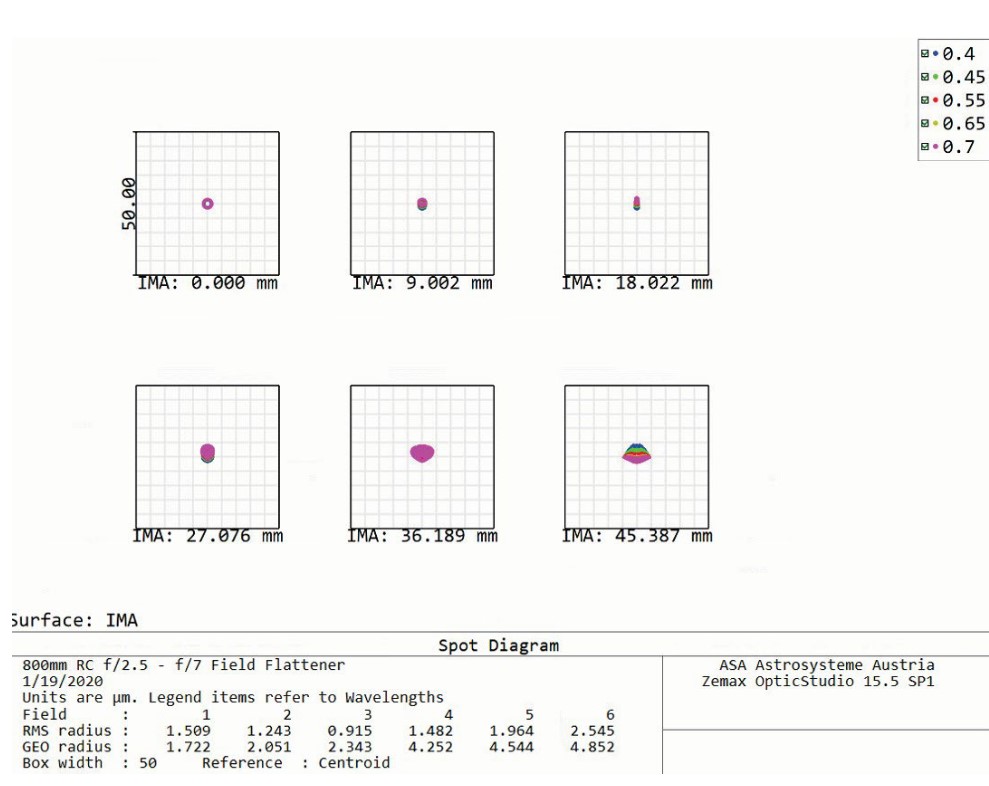
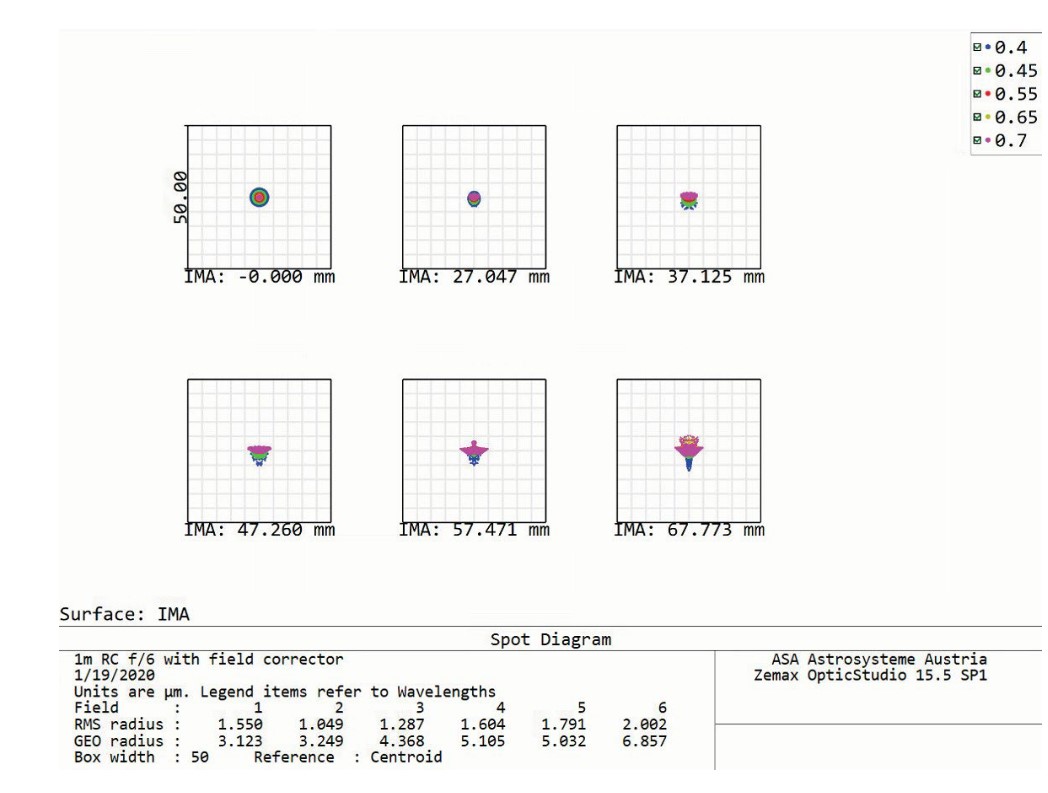 ASA corrector examples
ASA corrector examples
Below you are spot diagrams of our 800mm f/7 – f/2.5 RC with our standard field flattener. As you can see, we are also using 400nm in our wavelength calculation because most blue filters have a cutoff there and not at 430nm.The result is seeing-limited performance even in Paranal Seeing conditions up to 90mm field size. The next example is of a system we offer for the next generation of large CCD cameras and which has been delivered and commissioned already, it is a 1m system with a modified RC design and a 3-lens corrector.
The seeing-limited field size is 135mm. You will not reach this performance if you limit the optical design with a spherical secondary mirror used in a Dall Kirkham system. More Myth Busting Another myth you may have heard mentioned is the RC’s higher sensitivity to collimation errors. Let’s also shed some light on this myth as well:
In above examples we have used the:
• f/6.5 – f/2.93 CDK with an optimized elliptical primary
• f/6.5 – f/2.93 RC with corrector
In this case we have tilted the secondary mirror by 0.02°. If we assume a 300mm diameter secondary, this means a tilt of 0.1mm at one side. The result may surprise some people but it’s an indisputable optical fact: the RC with corrector is less sensitive to the secondary tilt than the CDK. It is also useful to examine the centering error. Let’s consider a secondary centering error of 0.5mm.
In this case we can see a larger error in the case of the RC telescope. (It is however, nowhere near the 5x factor mentioned by our competitor.) Even more interesting - Most of the secondary center and tilt errors can be compensated by the final main mirror collimation with a star (looking at the in and out of focus images). Every owner of a Newtonian telescope is used to this procedure. Most customers need only 1-2 minutes to perform the final collimation.
For example: to correct the secondary centering error, the main mirror would be tilted by 0.015°. This is shown in the above spot diagram. It proves that all the collimation errors can finally be corrected by ONE optical element (unless the errors would be huge, like 5mm secondary centering error). This happens
completely automatically and is straightforward if the customer removes the coma by centering the central obscuration visible in the in and out of focus images. Every RC can be collimated in 5 minutes with a simple laser collimator and a star. Just as important – our mechanical implementation of the RC design has stable
collimation over time!
Corrector flexibility and Reducer quality
With the RC design, you can optimize the reducer with the least number of lenses without having to take a corrector into account. ASA would never use a reducer behind our field flattener. Unfortunately for the customer - this is what an optical designer has to do if he has to put a reducer in a CDK with fixed lens
corrector. The next example is our standard 0.65x reducer for the 800mm f/7 - f/2.5 RC. This is a mid-size reducer that we offer for this telescope and it will work with image diagonals of 55mm. At ASA, the customer has the choice between three different reducers for different sized CCDs
The largest lens has a diameter of 118mm but it is not possible to design a 3” reducer with 55mm field without causing excessive vignetting. With our 5” reducer, vignetting is less than 30%, which can be easily corrected by flat fields.
Conclusion(s)
• The RC (with corrector) is slightly more sensitive to secondary centering than the CDK.
• The CDK is more sensitive to secondary tilt than the RC.
• The RC OTA is shorter and more compact than the CDK – allowing for smaller observatories.
• The RC has a smaller central obstruction than the CDK.
• The RC produces higher contrast images than the CDK.
• The RC telescope is more versatile than the CDK. It can be used
1) without a flattener,
2) with a flattener, or
3) with a high-performance reducer
ASA/APM Services
ASA Accessories
The remote package contains an IP Camera mounted inside the Dome to remotely view the Telescope and an Uninterruptible Power Supply (UPS). The IP Camera allows to always view the telescope orientation to give you situational awareness of the observatory status. The UPS allows the telescope to keep operating during shorter (<30sec) power interruptions and to safely park the telescope in the event of a longer power outage.
This package contains sensors for sky and ambient temperature, rain and humidity and wind speed plus all necessary mounting material.
This package guaranties operational safety of your observatory in case of unsuitable or hazardous weather conditions. It also provides the operator with a web interface to monitor and log weather events.

